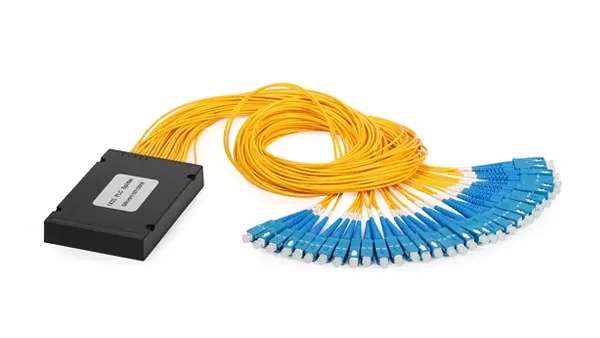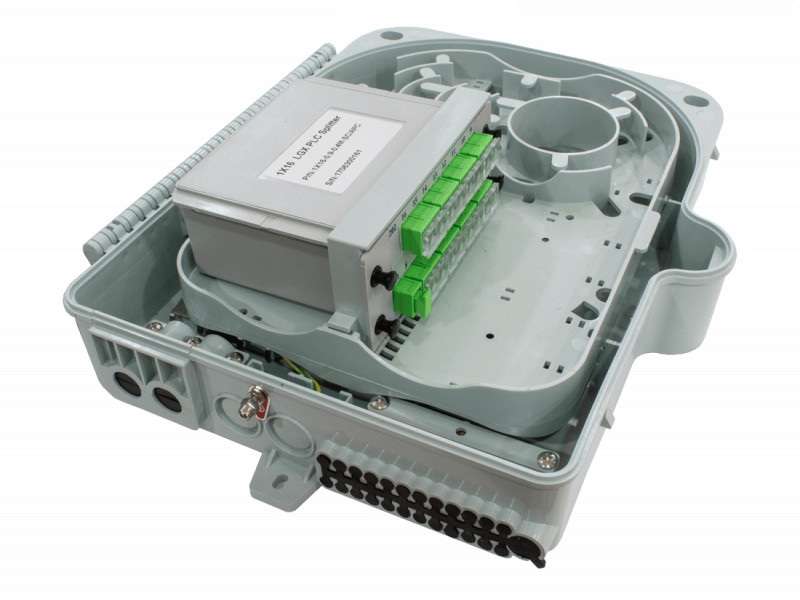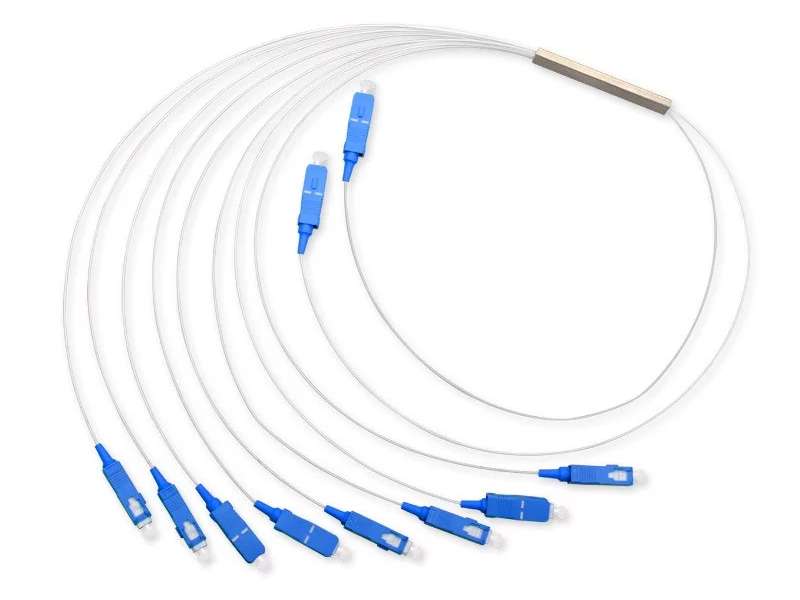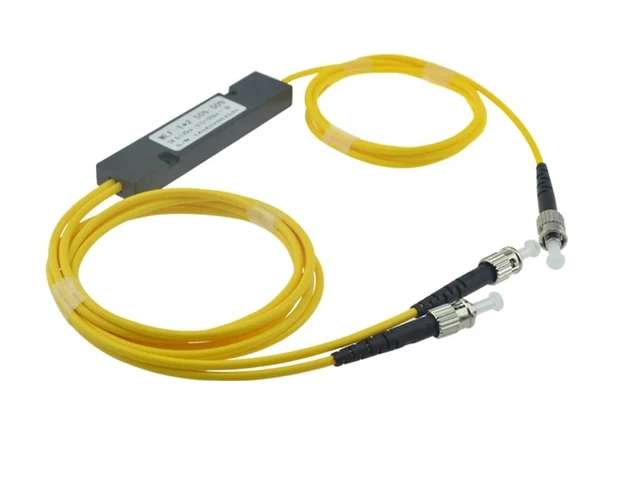The Future of Fiber Optic PLC Technology: Exploring Couplers, Splitters, WDM's, and More

Revolutionizing Communication Networks
Fiber optic PLC technology is transforming the landscape of communication networks. With its advanced capabilities and versatility, fiber optic PLCs are revolutionizing the way data is transmitted and managed. These programmable devices provide enhanced control and management of fiber optic networks, offering improved efficiency and reliability. By leveraging fiber optic PLCs, organizations can optimize their network performance, streamline operations, and enable seamless connectivity. This groundbreaking technology has paved the way for faster data transmission, increased bandwidth capacity, and more efficient network control. As fiber optic communication technology continues to evolve, the adoption of fiber optic PLCs will play a crucial role in shaping the future of communication networks.
Understanding Fiber Optic Couplers and Splitters
Fiber optic couplers and splitters are crucial components in fiber optic networks, enabling efficient signal distribution and combination. These devices play a vital role in dividing optical signals into multiple outputs or combining multiple inputs into a single output.
Working Principles of Couplers and Splitters
Couplers are designed to divide the optical signal into multiple outputs, allowing it to be distributed to different destinations within the network. On the other hand, splitters combine multiple inputs into a single output, consolidating signals from different sources.
Types of Couplers and Splitters
There are various types of fiber optic couplers and splitters available, each with its own advantages and applications. Fused couplers use heat to fuse fibers together, creating a coupling region that allows for signal division or combination. Planar lightwave circuit (PLC) splitters utilize waveguide technology on a small chip to split or combine signals efficiently. Wavelength-selective splitters separate signals based on their wavelengths, enabling more precise control over signal routing.
These fiber optic coupler devices and optical signal dividers offer flexibility in designing network architectures and allow for efficient utilization of resources. Similarly, fiber optic splitter devices and optical signal combiners provide seamless integration of multiple inputs or outputs within the network infrastructure.

Simultaneous Transmission with Fiber Optic WDM's
Wavelength Division Multiplexing (WDM) is a technology that enables the simultaneous transmission of multiple signals over a single fiber optic cable. It utilizes different wavelengths of light to carry separate data streams, allowing for efficient and high-capacity communication.
Understanding Wavelength Division Multiplexing (WDM)
WDM technology works by combining multiple optical signals with different wavelengths onto a single fiber. These signals can then be separated at the receiving end using wavelength-selective devices. By utilizing different wavelengths, WDM allows for the transmission of multiple data streams simultaneously, significantly increasing the bandwidth capacity of fiber optic networks.
Benefits and Applications of WDM
Wavelength Division Multiplexing offers several benefits and finds wide applications in various industries. Firstly, it provides increased bandwidth capacity, allowing for more data to be transmitted over existing infrastructure without the need for additional fibers. This makes it a cost-effective solution for network expansion and upgrades.
WDM is widely used in telecommunications, where it enables the efficient utilization of fiber optic cables to support high-speed internet connections and voice communication. It is also extensively employed in data centers to handle large volumes of data traffic between servers and storage systems.
Furthermore, WDM plays a crucial role in long-haul fiber optic networks, enabling the transmission of data over long distances without signal degradation. This technology has revolutionized long-distance communication by providing reliable and high-performance connectivity.
Advantages and Applications of Fiber Optic PLC's
Fiber optic PLC's (Programmable Logic Controllers) are programmable devices that play a crucial role in network control and management within fiber optic networks. These devices offer numerous advantages and find applications in various industries.
Understanding Fiber Optic PLC's
Fiber optic PLC's are programmable devices specifically designed for controlling and managing fiber optic networks. They provide flexibility, scalability, and enhanced performance, allowing for efficient network operations. With their programmability, these devices can be customized to meet specific network requirements, making them adaptable to changing needs.
Applications of Fiber Optic PLC's
Fiber optic PLC's have diverse applications across different industries. In the telecommunications sector, they are used to manage and control the flow of data within fiber optic communication systems. This enables efficient network management, improved reliability, and reduced downtime.
Data centers also benefit from the use of fiber optic PLC's as they enable effective control over large-scale data traffic. These devices ensure seamless connectivity between servers, storage systems, and other critical components within the data center infrastructure.
In industrial automation settings, fiber optic PLC's facilitate efficient control and monitoring of processes by integrating with sensors, actuators, and other automation equipment. They enable real-time data transmission and response, enhancing productivity and operational efficiency.
The advantages offered by fiber optic PLC's make them indispensable in various applications where reliable network control is essential.

Comparing Fiber Optic Couplers, Splitters, WDM's, and PLC's
Fiber optic couplers, splitters, WDM's (Wavelength Division Multiplexing), and PLC's (Programmable Logic Controllers) are essential components of fiber optic communication networks. Each technology has its unique features and benefits.
Unique Features of Couplers, Splitters, WDM's, and PLC's
Couplers and splitters play a vital role in signal distribution within fiber optic networks. They enable the division or combination of optical signals to facilitate efficient communication. On the other hand, WDM's allow for simultaneous transmission of multiple signals over a single fiber by utilizing different wavelengths of light. This technology significantly increases the capacity of fiber optic networks. PLC's offer programmability and enhanced network control capabilities. They can be customized to meet specific network requirements and provide flexibility in managing and controlling data flow.
Benefits and Considerations of Each Technology
Couplers and splitters are cost-effective solutions that are easy to deploy. However, they may introduce signal loss due to splitting or combining signals. WDM technology provides increased bandwidth capacity but requires precise wavelength management for optimal performance. PLC's offer flexibility and scalability in network management but may have higher initial costs due to their advanced features.
When considering these technologies for fiber optic networking, it is essential to evaluate the specific requirements of the network application. Factors such as cost-effectiveness, signal loss tolerance, bandwidth requirements, scalability needs, and control capabilities should be taken into account.
The Future of Fiber Optic PLC Technology
Fiber optic PLC technology is continuously evolving, paving the way for exciting advancements in the field of optical networks.
Emerging Trends and Advancements
Advancements in fiber optic PLC technology are focused on achieving higher data rates and increased network automation. As data demands continue to grow, there is a need for faster transmission speeds and improved network efficiency. This drives research and development efforts towards enhancing the performance of fiber-based communication systems.
Emerging trends also emphasize improved energy efficiency in fiber optic networks. With the increasing focus on sustainability, reducing power consumption in network infrastructure becomes crucial. Additionally, integration with emerging technologies like 5G is an area of exploration, as fiber optic PLC's play a vital role in supporting the high-speed and low-latency requirements of 5G networks.
Real-World Examples and Implementations
Real-world examples showcase the diverse applications of fiber optic PLC's across various industries. In smart cities, these technologies enable efficient control and management of critical infrastructure such as street lighting, traffic signals, and surveillance systems. In healthcare settings, fiber optic PLC's facilitate reliable communication between medical devices and systems, improving patient care and safety. In transportation networks, they ensure seamless connectivity for intelligent transportation systems that enhance traffic management and safety.
Implementations of fiber optic PLC technology demonstrate its transformative impact on industries such as telecommunications, data centers, industrial automation, and more. These implementations highlight the benefits of enhanced network control capabilities, improved reliability, reduced downtime, and increased operational efficiency.
As fiber optic networks continue to evolve, advancements in PLC technology will shape the future by enabling faster data transmission rates, increased automation capabilities, improved energy efficiency, and integration with emerging technologies.

Embracing the Future of Fiber Optic PLC Technology
Fiber optic PLC technology is revolutionizing communication networks, offering enhanced control, flexibility, and scalability. Understanding the different components and technologies, such as couplers, splitters, WDM's, and PLC's, is crucial for leveraging their benefits in fiber optic networks. As fiber optic networks continue to evolve, embracing the advancements in PLC technology will pave the way for a more efficient and connected future. By harnessing the power of fiber optic PLC's, organizations can optimize network performance, improve reliability, and enable seamless connectivity. The future holds exciting possibilities for fiber optic communication technology with higher data rates, increased automation capabilities, improved energy efficiency, and integration with emerging technologies.
See Also
The Future of Fiber Preconnection Solutions: Exploring MTP-LC Duplex 12cores Trunk Cable Patchcord
Choosing the Best Fiber Optic Splitters: The ABS PLC Advantage
Exploring Fiber Optic Cable Types: Single-mode vs. Multi-mode
About US
Follow Us
AnetFiber company's main products are indoor and outdoor optical fiber cables, outdoor waterproof pre-connected fiber-to-the-home products, PLC optical fiber splitters, optical fiber jumpers and pigtails, MTP®/MPO high-density big data product solutions, optical fiber field quick connectors and research and development molding, injection molding and production of optical fiber distribution boxes, optical fiber chassis cabinets, the market has expanded to the world, Europe, America, Asia, the Middle East and Latin America.
Address
Shenzhen City, Baoan District, Yanluo Street, Tangxiayong Community, Yangyong Industrial Road, Tonggangda New Energy Vehicle Park 406
Contacts
+86 199 2655 3586

